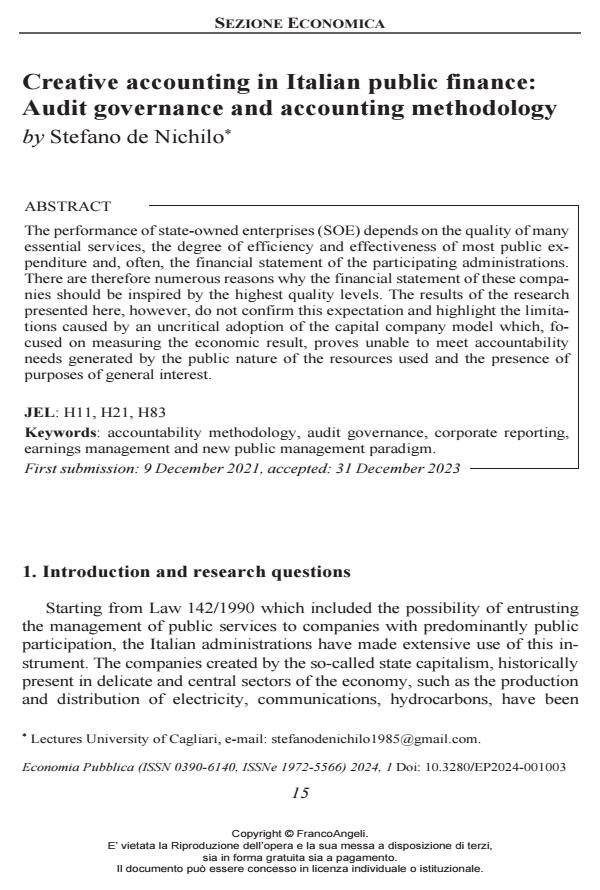Creative accounting in Italian public finance: Audit governance and accounting methodology
Titolo Rivista ECONOMIA PUBBLICA
Autori/Curatori Stefano de Nichilo
Anno di pubblicazione 2024 Fascicolo 2024/1
Lingua Inglese Numero pagine 22 P. 15-36 Dimensione file 115 KB
DOI 10.3280/EP2024-001003
Il DOI è il codice a barre della proprietà intellettuale: per saperne di più
clicca qui
Qui sotto puoi vedere in anteprima la prima pagina di questo articolo.
Se questo articolo ti interessa, lo puoi acquistare (e scaricare in formato pdf) seguendo le facili indicazioni per acquistare il download credit. Acquista Download Credits per scaricare questo Articolo in formato PDF

FrancoAngeli è membro della Publishers International Linking Association, Inc (PILA)associazione indipendente e non profit per facilitare (attraverso i servizi tecnologici implementati da CrossRef.org) l’accesso degli studiosi ai contenuti digitali nelle pubblicazioni professionali e scientifiche
The performance of state-owned enterprises (SOE) depends on the quality of many essential services, the degree of efficiency and effectiveness of most public expenditure and, often, the financial statement of the participating admin-istrations. There are therefore numerous reasons why the financial statement of these companies should be inspired by the highest quality levels. The results of the research presented here, however, do not confirm this expectation and highlight the limitations caused by an uncritical adoption of the capital company model which, focused on measuring the economic result, proves unable to meet accountability needs generated by the public nature of the resources used and the presence of purposes of general interest.
Parole chiave:accountability methodology, audit governance, corporate reporting, earnings management and new public management paradigm.
Jel codes:H21, H83
Stefano de Nichilo, Creative accounting in Italian public finance: Audit governance and accounting methodology in "ECONOMIA PUBBLICA " 1/2024, pp 15-36, DOI: 10.3280/EP2024-001003